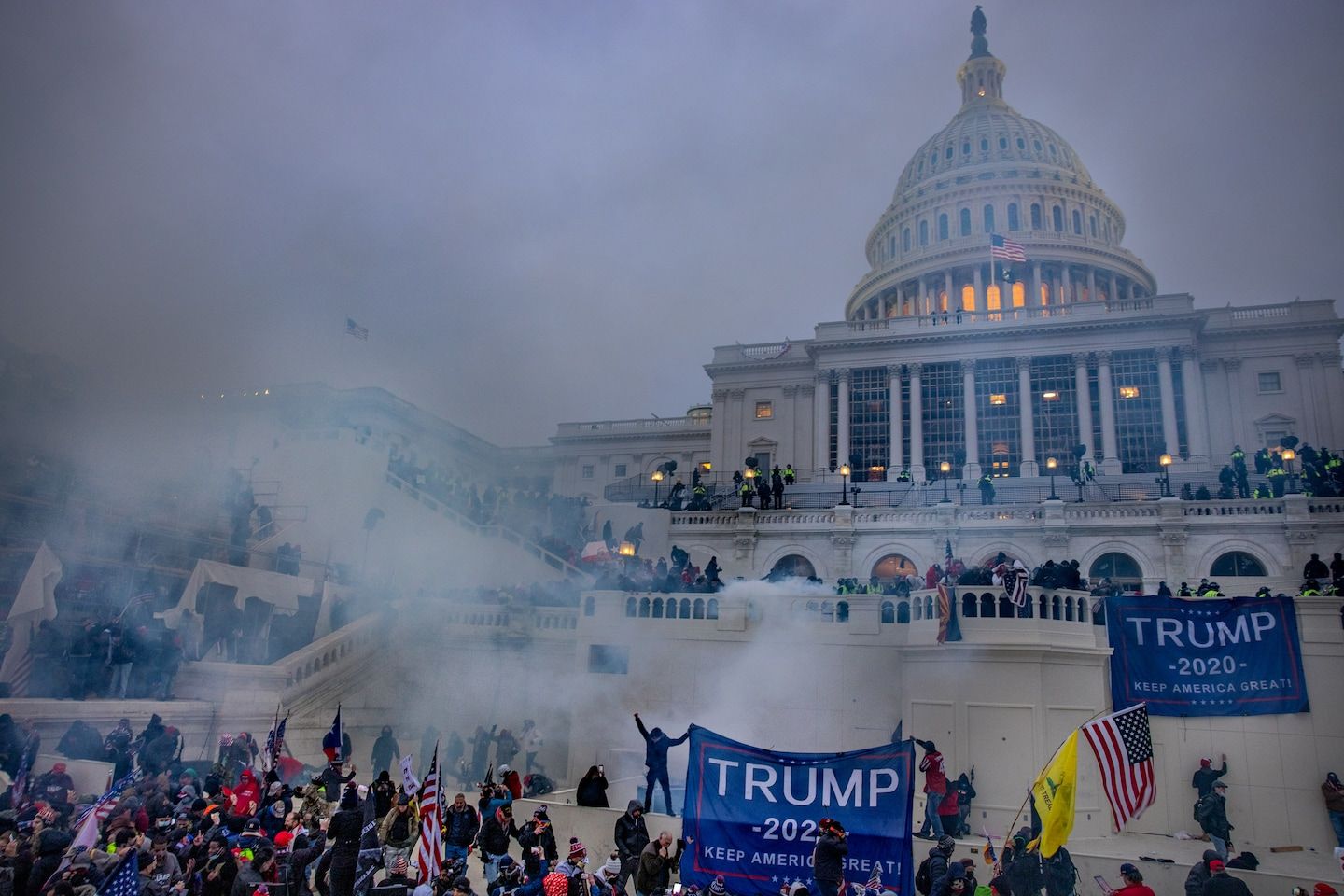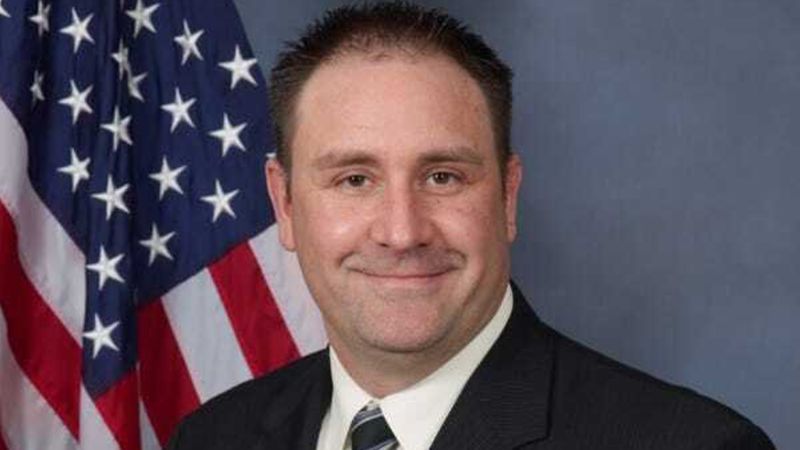Senate report criticizes FBI, DHS for missing Jan. 6 red flags
Listen 6 min Comment on this story Comment Gift Article Share
A new Senate committee report sharply criticizes the FBI and Department of Homeland Security for what it says were failures to believe the intelligence tips they were receiving in the run-up to the Jan. 6, 2021, attack on the U.S. Capitol — offering fresh examples, nearly 2½ years later, of warnings and information that went unheeded.
The report by the Senate Homeland Security and Governmental Affairs Committee’s majority staff, titled “Planned in Plain Sight,” expands on previous findings, including reporting by The Washington Post, about red flags missed in the weeks leading up to the pro-Trump riot that delayed Joe Biden’s certification as president.
It also contains additional instances and context for what the authors describe as a failure by federal intelligence officials to believe the many warnings they received.
Advertisement
The 105-page report said the FBI and DHS Office of Intelligence and Analysis “failed to fully and accurately assess the severity of the threat identified by that intelligence, and formally disseminate guidance to their law enforcement partners with sufficient urgency and alarm to enable those partners to prepare for the violence that ultimately occurred on January 6th.”
The document sheds new light on the many different types of warnings the FBI received — from nongovernmental organizations tracking extremism online, from the public, and from its own field offices. Days after the riot, The Post revealed the existence of a Jan. 5 report from the FBI’s Norfolk office warning of online discussion of attacking Congress. But the Senate report includes a similar, previously unknown written warning issued that same evening by the New Orleans FBI office.
That New Orleans warning noted that some participants in the planned “stop the steal” protest had decided to establish an armed, so-called Quick Reaction Force in Northern Virginia.
Advertisement
One person in an online discussion among militia members said “people should bring mace, flash lights, body armor, and head protection,” according to the report. “Participants were aware of the prohibition on firearms in Washington, District of Columbia, so they planned to establish an armed presence outside the city to respond to ‘calls for help.’”
That description matches actions taken by members of the Oath Keepers, a number of whom have since been found guilty of seditious conspiracy for their roles in preparing and planning for the Jan. 6 chaos.
The report by the New Orleans field office was sent to all FBI field offices, as well as the Bureau of Alcohol, Tobacco, Firearms and Explosives, DHS, Justice Department, National Security Agency and State Department. Still, the Senate committee criticized the FBI for what it said was a lack of urgency or alarm in its direct conversations with officials before Jan. 6, and said the written reports did not convey a sense of the overall volume of threat information agents were receiving at the time.
Advertisement
That was because, the report found, federal officials simply didn’t believe what they were being told.
The agencies, the report concluded, “were biased toward discounting the possibility of such an unprecedented event.”
“The failure was largely a failure of imagination, to see threats that the Capitol could be breached as credible, despite the fact that the threats were shared publicly and in such high volume and in a variety of ways,” said Sen. Gary Peters (D-Mich.), the chairman of the committee. “These agencies repeatedly downplayed the threat and failed to sound the alarm.”
The report separately found that the DHS office tasked with analyzing intelligence was reluctant to issue warnings related to Jan. 6, in part because of criticism the agency had received for its handling of intelligence related to protests in the wake of the police killing of George Floyd the previous summer.
Advertisement
One DHS analyst messaged a colleague on Jan. 3 saying “there are threats” but “our threshold is just very high now.”
Even at 3 p.m. Jan. 6, after the riot had begun and shortly after one rioter, Ashli Babbitt, was shot by a police officer as she tried to climb through a window to an area where lawmakers were retreating from the mob, a DHS email still insisted the agency had no important information to share, the report said.
“In the past 48 hours there has been significant chatter on the forum thedonald[.]win that was at the time considered to by hyperbole and as such protected speech,” the email said. “Other threads over the past 48 hours have called for more violent actions but at this time no credible information to pass on has been established.”
The report also found that in the wake of the riot, there has been a significant amount of finger-pointing among federal agencies, with Justice Department and FBI officials largely blaming U.S. Capitol Police for not being able to keep the mob at bay, and Capitol Police officials arguing they did not receive urgent warnings from the FBI about possible violence.
Advertisement
The FBI has long maintained that it did not fail in its mission in the lead-up to Jan. 6. In a written statement in response to the new report, the bureau again defended its efforts.
“The FBI’s goal is to disrupt and stay ahead of any threats,” the statement said. “We are constantly trying to learn and evaluate what we can do better or differently, and this is especially true of the attack on the US Capitol.”
The report finds that the FBI did, in fact, have such intelligence, but that agents and their supervisors apparently didn’t believe it.
One tip the FBI received on Dec. 26, 2020, said: “Their plan is to literally kill people.”
Tuesday’s Senate report is the latest in a series of findings about Jan. 6 issued by congressional committees, many of them sharply critical of the FBI. For more than two years, Justice Department inspector general Michael Horowitz has been investigating the events leading up to the storming of the Capitol. But he has yet to release his findings.
Advertisement
After the riot, a DHS official testified to Congress that the agency has changed how it analyzes intelligence, particularly when it comes to information publicly available on social media.
A DHS spokesperson said Monday that the agency has been conducting a “comprehensive organizational review” of its intelligence office, which “will soon be developing recommendations for how [the office] can better meet the homeland security threats of today and tomorrow.”
The Senate report suggests that federal officials were too focused on whether specific tips identified individuals who planned to commit an act of violence against a particular person, and failed to adequately consider the sheer volume of vague — but very violent — online conversation.
Gift this article Gift Article
Source: The Washington Post


